Selling a diamond ring or a pair of diamond earrings can be more complex than buying them. While buying diamonds involves considering factors like cut, clarity, and carat, selling diamonds requires additional steps and documentation.
When selling a diamond, it’s crucial to have the proper documentation to ensure a fair price. Even with the original receipt, without the necessary documentation, you might only receive around 50% of the price you initially paid for the diamond.
To successfully and profitably sell your diamonds, you will need a diamond appraisal. In this article, we will discuss what a diamond appraisal is, the various types of diamond appraisals available, how the appraisal process works, and how it differs from a receipt, grading reports, and the purchase price.
DESIGN YOUR OWN ENGAGEMENT RING: START WITH A SETTING OR START WITH A DIAMOND. IT’S REALLY UP TO YOU!
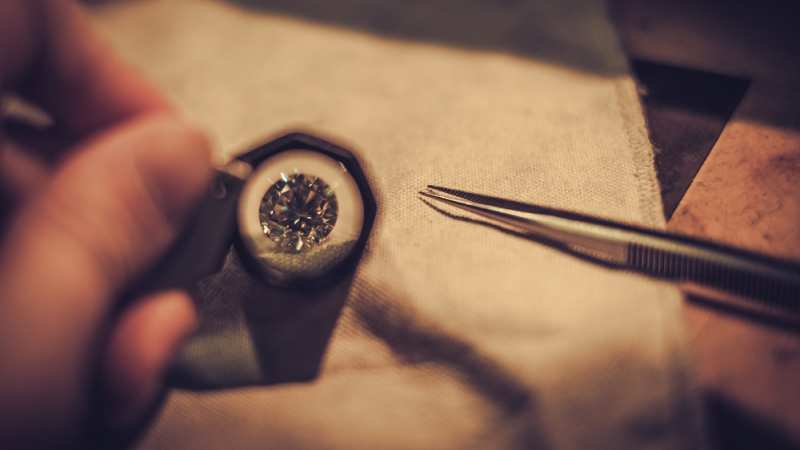
What Are Diamond Appraisals?
Diamond appraisals serve as comprehensive documents that contain crucial information about the diamond, including the four Cs (cut, carat, clarity, and color), as well as measurements and estimated value. If the diamond is set in jewelry, the appraisal will also include details and value assessments for both the diamond and the setting.
Certified diamond appraisers, ideally with gemological knowledge or GIA approval, compile these appraisal documents. They possess the expertise to evaluate a diamond’s characteristics and estimate its value accurately.
To find a reputable diamond appraiser, consider the following criteria:
- Check their credentials: Ensure the appraiser provides verifiable qualifications and credentials.
- Understand the purpose and types of appraisals: A reliable appraiser should explain the importance of diamond appraisal and guide you through the various appraisal options available.
- Walkthrough of the appraisal process: The appraiser should explain the necessary measurements, lab work, and procedures involved in the appraisal process, clarifying why they are essential.
- Provide sealed statement and signature: The appraiser should issue a document with a sealed statement of purpose and value, including their signature.
If you have doubts about an appraiser, don’t hesitate to inquire about their certificates or credentials to ensure their legitimacy.
A diamond appraisal document should contain the following information:
- Purchaser’s name and address
- Date of filing
- Article number
- Purpose and intended use of the appraisal
- Invoice and certificate number
- Detailed description of the diamond or jewelry piece
- Retail value
- Appraiser’s name and signature
- Mounting attributes (type, weight, construction, finish, condition)
- Diamond grading report (measurements, cut style, carat weight, depth, table, girdle, cut grade, polish, symmetry, clarity grade, color grade, fluorescence)
These details collectively provide a comprehensive assessment of the diamond’s physical characteristics, quality, and assigned value.
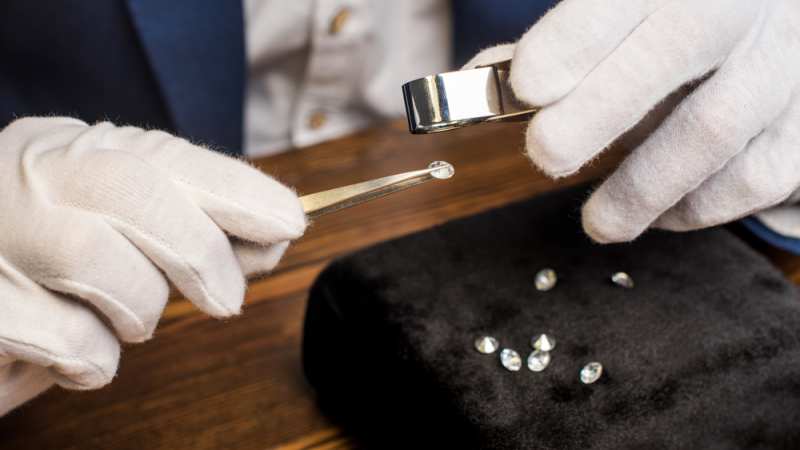
Why Do You Need A Diamond Appraisal?
A diamond appraisal is essential for determining the value of a diamond and its accompanying setting. Typically, a diamond appraisal is required for insurance purposes, as it helps determine the appropriate premium and ensures accurate compensation in the event of theft or damage.
The value stated in a diamond appraisal is based on current market prices, which means the value of the diamond can fluctuate over time. However, appraisals are not limited to insurance purposes and serve various other functions, such as:
- Tax purposes: Appraisals are used to determine the value of a diamond for tax reporting or deductions.
- Inherited jewelry: Appraisals help assess the value of inherited jewelry for estate planning or distribution.
- Future selling opportunities: Knowing the value of your diamond through an appraisal can aid in future selling decisions.
- Auctions: Appraisals provide an accurate assessment of a diamond’s value for auction purposes.
- Proof of ownership: An appraisal document serves as evidence of ownership in case of disputes or claims.
- Divorce settlements: Appraisals help in accurately dividing the value of diamonds during divorce proceedings.
Having a diamond appraisal is always advisable, even if it’s not immediately necessary. It can prove valuable in the future.
There are three main types of diamond appraisals:
- Replacement Value Appraisal: This is the most common type, primarily used for insurance purposes. It determines the diamond’s value based on current market prices, ensuring appropriate compensation in case of loss or damage.
- Comparable Replacement Value Appraisal: This appraisal is for diamonds that are no longer available on the market. It considers the uniqueness or historical significance of the diamond to determine its value.
- Fair Market Value Appraisal: This document estimates the amount one would likely receive if selling the diamond. It can be useful for tax liabilities, estate settlements, or personal reference.
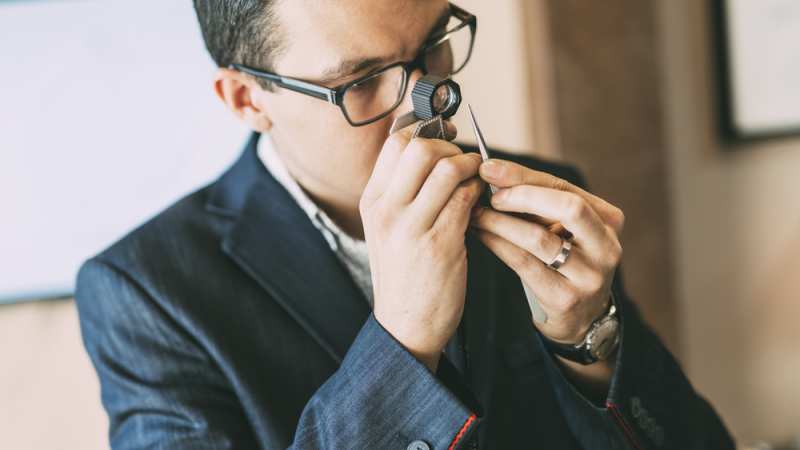
How Is A Diamond Appraised?
Diamonds undergo an appraisal process conducted by certified professionals or gemologists. While you may not need to know the exact details of the appraisal, it’s helpful to have a general understanding of what the appraiser does to complete the diamond appraisal certificate. Here’s a brief overview of the steps involved:
Step 1: Preparing the Diamond
The gemologist begins by ensuring that the diamond is thoroughly cleaned before the examination process can commence.
Step 2: The First Impression
The appraiser assesses the diamond’s shape and the accompanying setting to provide a detailed description of visible characteristics. They also examine the diamond with the naked eye to identify any noticeable imperfections.
Step 3: Getting into the Details
Using a microscope, the gemologist examines the diamond in greater detail to uncover even the smallest imperfections. They also look for engravings on the jewelry, typically using a magnifying glass or microscope to locate the serial number.
Step 4: Color Grading
With the aid of a daylight lamp and special white cardboard, the gemologist determines the diamond’s color and assigns it a color grade rating ranging from D to Z.
Step 5: Weighing the Diamond
The carat weight is determined using a precise scale. Measuring loose diamonds is relatively straightforward, but assessing the carat weight of diamonds in a setting may require additional methods for precise measurement.
Step 6: Determining the Cut
Once the carat weight is established, the gemologist evaluates the diamond’s cut, assessing its quality and noting any deficiencies.
Step 7: Looking for Fluorescence
The gemologist examines the diamond for fluorescence, which refers to the presence of gas within the diamond. Fluorescence can significantly impact the diamond’s value, with higher levels of fluorescence potentially resulting in a decrease in value.
By following these steps, the gemologist gathers the necessary information to complete the diamond appraisal document accurately.
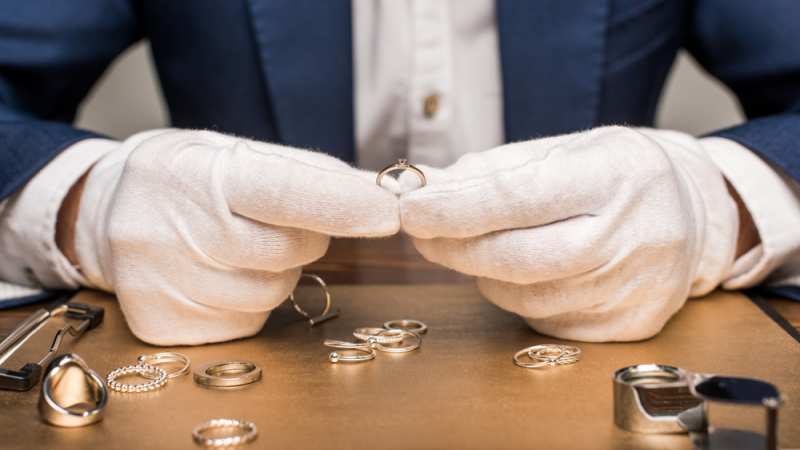
Do I Need A Diamond Appraisal If I Still Have The Receipt?
Many individuals believe that holding onto the original receipt is sufficient and renders a diamond appraisal document unnecessary. However, this assumption is incorrect.
The receipt obtained at the time of purchase lacks the comprehensive details provided in an appraisal. While it may include some information such as the price, setting, or shape of the diamond, it falls short in several aspects.
For instance, the receipt cannot be utilized for tax or insurance purposes as it fails to provide information on the diamond’s quality and current market value. Furthermore, if the diamond was purchased on sale, the receipt will not reflect its actual value. The same applies if the diamond is part of a set or if it was acquired from an antique store.
In essence, a diamond appraisal is the sole document that guarantees both the actual value and the characteristics of your diamond.
Appraisal versus Resale Price
It is important to note that a diamond appraisal document does not guarantee that you can sell your diamond for at least the amount you paid for it. In most cases, the value stated in the appraisal will exceed the actual resale price.
Several factors contribute to the disparity between the diamond appraisal price and the resale price:
- Incorrect type of appraisal: For selling purposes, a fair market appraisal is necessary as it provides information on the expected selling amount. A replacement value appraisal alone may not enable you to sell the diamond for the listed value in the document.
- Diamond in a setting: Diamonds set in jewelry are more challenging to sell compared to loose diamonds. Second-hand engagement rings, earrings, and bracelets are not as sought after by buyers.
- Retailer overhead costs: Retailers have overhead expenses to cover, and they require a profit margin when purchasing diamonds. Consequently, they may not offer the amount they can obtain when reselling the diamond.
- Appraisal value exceeding retail price: Potential buyers are unlikely to purchase a diamond from you if the retail price is lower than the value indicated in the appraisal document.
When purchasing diamonds with the intention of selling them in the future for a profit, it is advisable to obtain a fair market appraisal and patiently wait for a favorable selling opportunity.
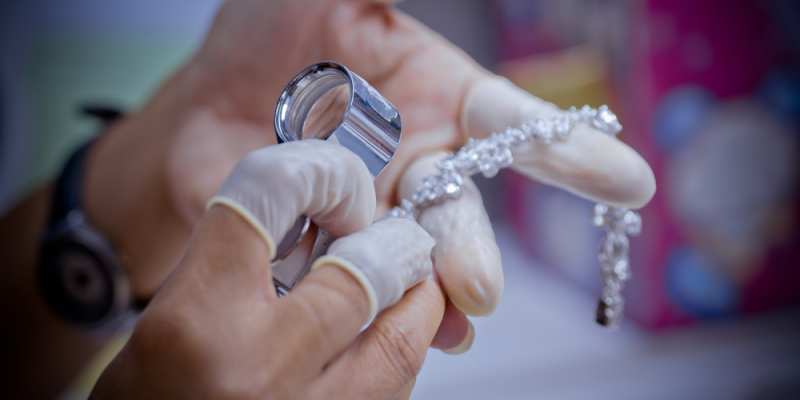
Conclusion
A diamond appraisal serves as a valuable document with multiple benefits.
Firstly, it is essential for tax and insurance purposes, providing you with the necessary documentation in case of theft or damage. Furthermore, it can prove advantageous when selling your diamonds in the future, offering credibility and transparency to potential buyers.
To ensure accurate valuation, it is recommended to have your diamonds appraised approximately every 18 months. This periodic appraisal accounts for the fluctuating values of both diamonds and jewelry, ensuring you stay informed about the current market trends and the worth of your precious gemstones.


